Local Indigenous Artists Contribute
Murals To Adorn Construction Site
Of Gordie Howe International Bridge
Story by Matthew St. Amand
Photography Courtesy Gordie Howe
International Bridge Project
It will be like a scene from a modern-day fable: over the next two years, images of an indigenous hoop dancer, a bear and its cubs, an eagle and the Creation of Turtle Island—along with two Canadian maple leaves—will slowly rise over the construction site of the Gordie Howe International Bridge to an approximate height of 250 metres.
The murals were painted onto corrugated aluminum panels surrounding the temporary climbing systems housing the cranes used in the construction of the two 220 metre towers that will stand on either side of the Detroit River.
“As construction progresses and the bridge towers begin to rise, the murals will be visible to the public by land and from the Detroit River,” says a bridge corporation press release. “The systems currently stand at the ground level and will be ‘jumped’ every few months before reaching their final height”.
The murals on the Canadian side of the bridge site were created by artists Naomi Peters of Caldwell First Nation, as well as Teresa Altiman and Daisy White from Walpole Island, as part of a project to incorporate art honouring the region’s First Nations heritage with this new, modern addition to the landscape. On the American side, artist Roberto Villalobos contributed images of American iron workers, an American eagle, and the Spirit of Detroit.
With all the spreadsheets and blueprints, timetables and logistics to worry about, where did the idea come from to incorporate art into the building of the bridge?
“It came from the workers,” explains Mark Butler, Director Communications of the bridge project. “Oftentimes, the space on the construction climbing systems is sold for advertising, or simply displays a company logo. On this project, the workers felt there should be art on the Canadian side that represented Canada and imagery on the U.S. side symbolizing America.”
So, in the autumn of 2020, the workers brought their idea to the bridge company administration, which liked it and put out a call to artists.
“We contacted Paul White at Walpole Island,” Mark continues. “He’s owned a construction company there for decades and is well connected with the community. He helped us find artists.”
Because of the size of the panels being painted, the Walpole Island community center was pressed into service as the “studio” where these large-scale works of art were created.
The entire creation process took about two months.
Artist Naomi Peters of Caldwell First Nation explained how she decided to paint a hoop dancer:
“My family and I enjoy going to pow wows. Seeing the dancers is always my favourite part, dressed in their beautiful regalia, their powerful movements and hearing the drum, which represents the heartbeat.”
Initial sketches were prepared and workshopped with bridge corporation involvement, who said they specifically wanted an eagle and a bear. The approved images were then recreated on graph paper, which allowed the artists to make adjustments to their designs.
“Paul and Theresa went first,” Naomi explains, “they picked their colours. We all decided we would use similar colours so there would be unity.”
The colours black, yellow and red recur in each of the murals.
“Those colours represent the sacred colours of our people,” artist Teresa Altiman explains in a video about the project.
The process began with each metal panel being wiped down to ensure there was no residue on them. Each artist assembled their metal panels and drew a grid on them so the graph paper sketches could be properly enlarged. Even the type of paint used was scrutinized, to ensure the murals had the best chance of surviving against 24/7 exposure to the elements. Paul White’s construction experience was especially helpful with this.
When the artists finally settled down to drawing on the panels, they used dry erase markers to sketch their images.
“Because of the short timeline,” Naomi says, “I had to simplify my design. I worked ten to twelve hours each day on the mural and finished it in about nine days. We worked from morning to night.”
The result is a hoop dancer surrounded by four coloured hoops.
“The hoop dance has much to do with healing,” Naomi says. “It is done for many reasons, mimicking the moves of animals.” Her four hoops are red, yellow, black, and white, which represent colours found on the traditional Medicine Wheel. They also represent the four directions of the wind and the four medicines: tobacco, sage, cedar, sweetgrass, which are also pictured in her mural.
“I’m very happy with how it came out,” Naomi says.
Artist Daisy White of Walpole Island First Nation is only seventeen years old. She is currently in her fourth year of high school, attending Ursuline College Chatham. She is the granddaughter of Project Co-ordinator, Paul White.
In the “Meet the Artists” video, she describes choosing the Creation of Turtle Island for her image: “I based it off the creation story we believe… The key piece is the tree on the back of the turtle because it formed an island. The tree and the fruit and the flowers symbolize life and strength.”
The result is a towering, colourful creation of traditional native art, with a man and a woman beneath the abundant tree.
If Daisy is producing such epic work after only five years of creating art, it will be interesting to see what she’s up to in ten years.
Also from Walpole Island First Nation is Artist Teresa Altiman. She painted two pieces showcased at the bridge construction site: an eagle looking to an eagle staff and a bear with its cubs.
Regarding the image of the eagle, Teresa says, “First Nations peoples in Canada believe that eagles communicate directly with the Creator and eagles— specifically their feathers—are highly revered by indigenous peoples in Canada… This eagle staff that I have in my picture is the actual eagle staff that stands in the council chambers here on Walpole Island at our governance building.”
When the bridge project is completed, there are plans to repurpose the panels.
“They will be exposed to the elements at a great height,” Mark Butler says. “This will have an effect on them. We’re looking at ways of keeping these panels for posterity.”
What do the artists hope observers will take away from seeing the art on the construction site?
“I hope that people will have a greater appreciation of native culture and be curious,” Naomi says.
Project coordinator, Paul White, told the Chatham Daily News he hopes the murals will “create a better understanding with our culture.”
For her own part, Teresa is proud that her work and heritage will be part of such an iconic project.
“It’s a marvellous opportunity to teach people a little bit about who we are,” she says. “I hope people will take the time to find out more about the paintings. It’s a tremendous teaching and learning process.”


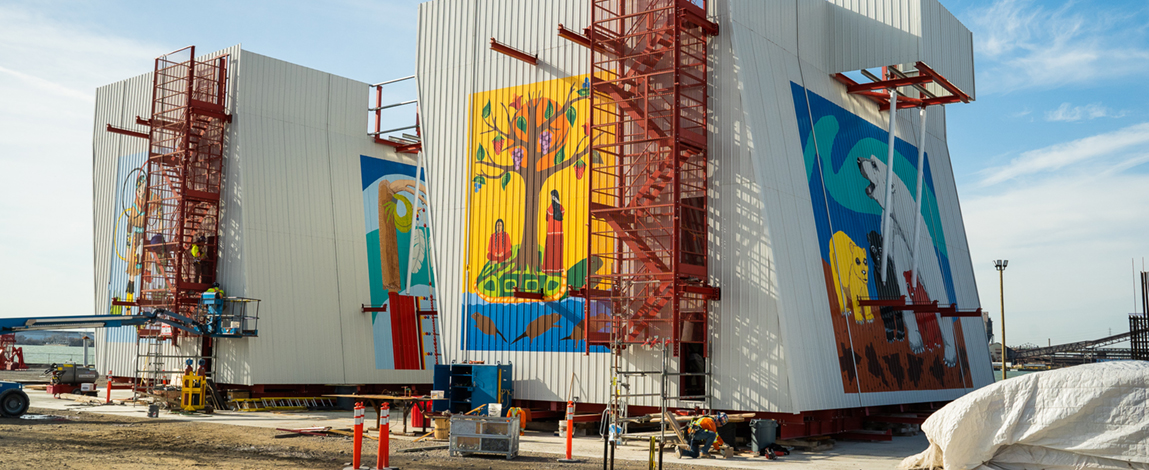
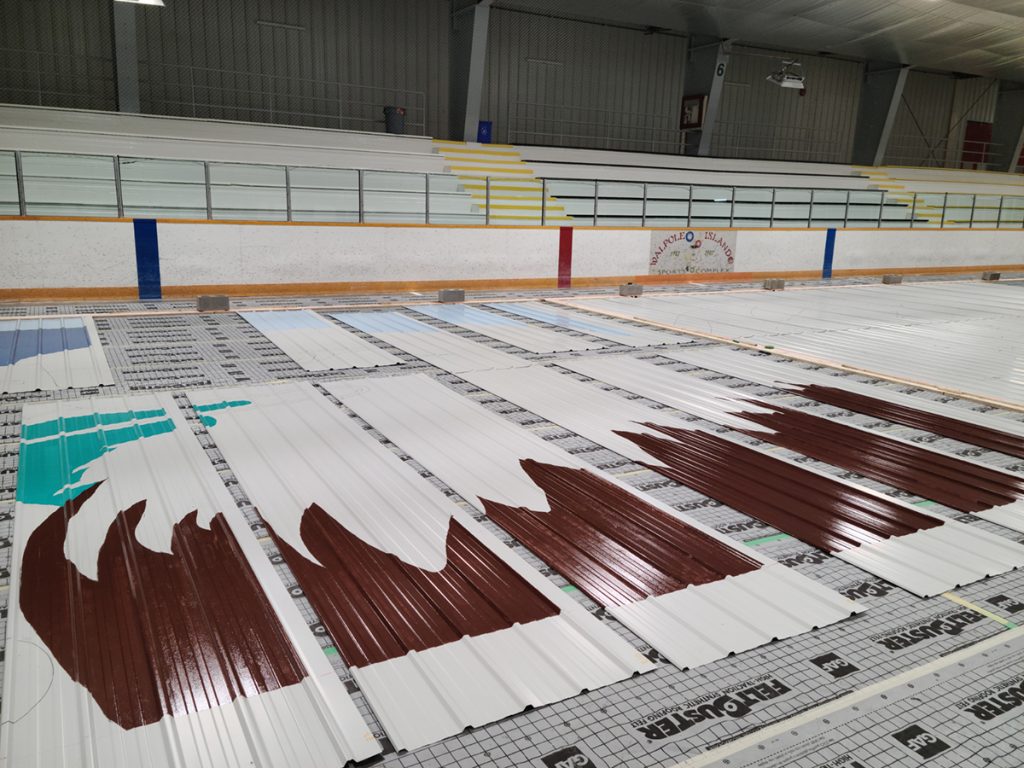
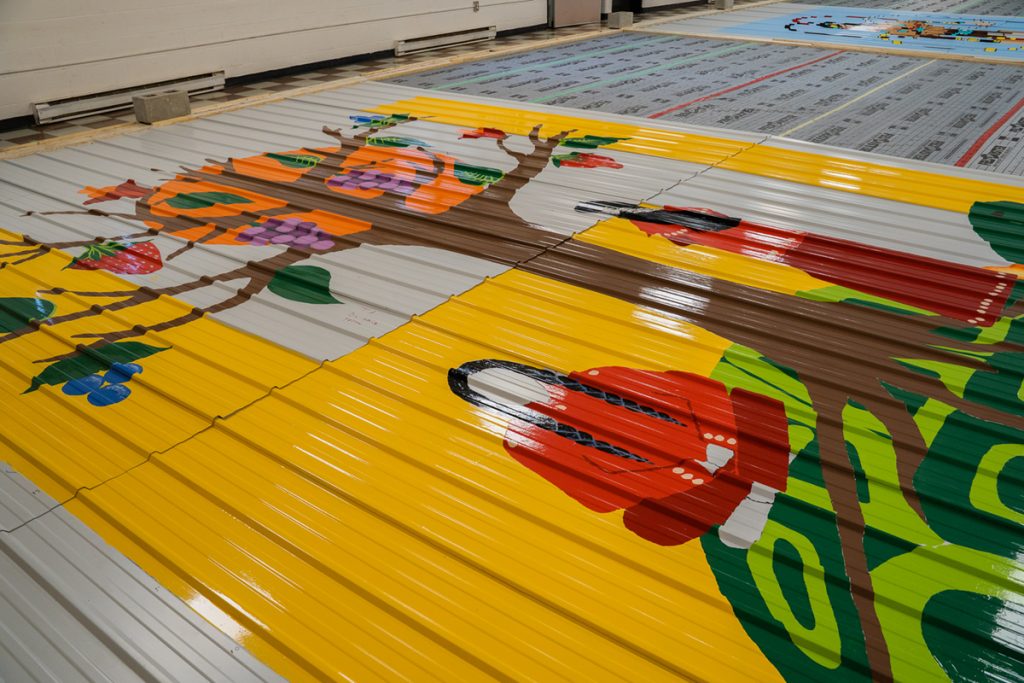
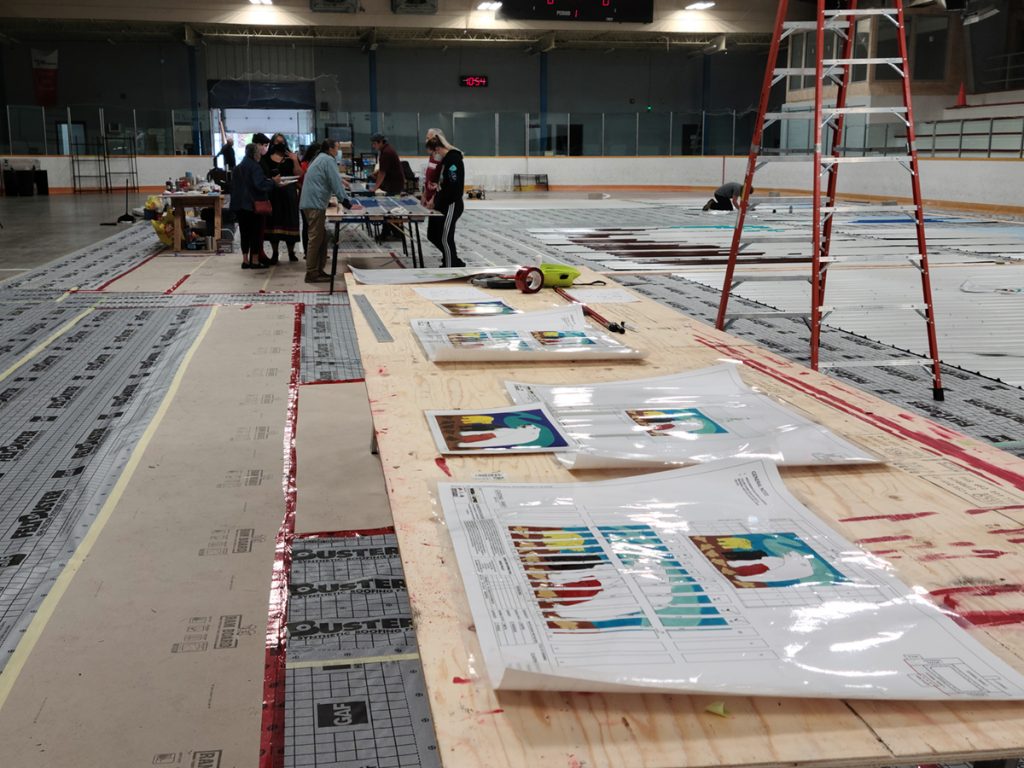
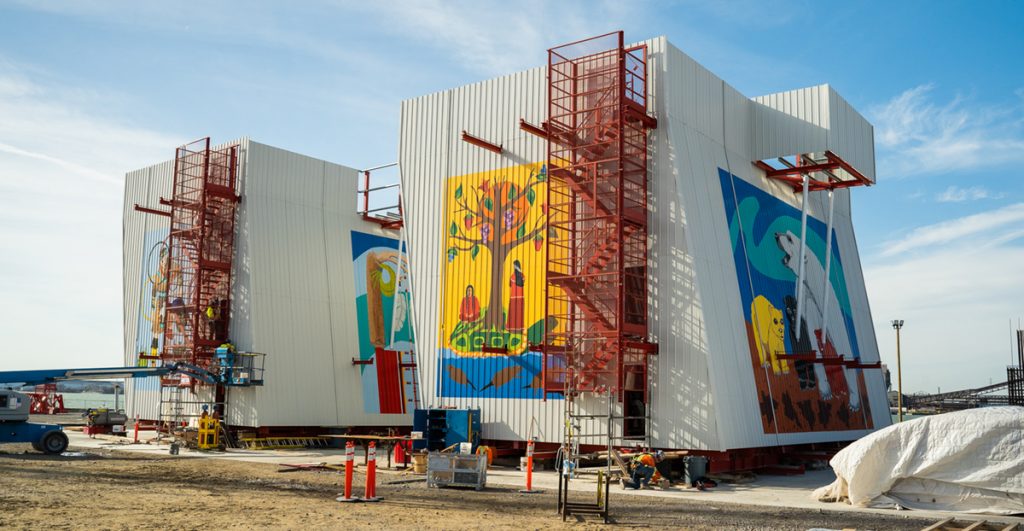
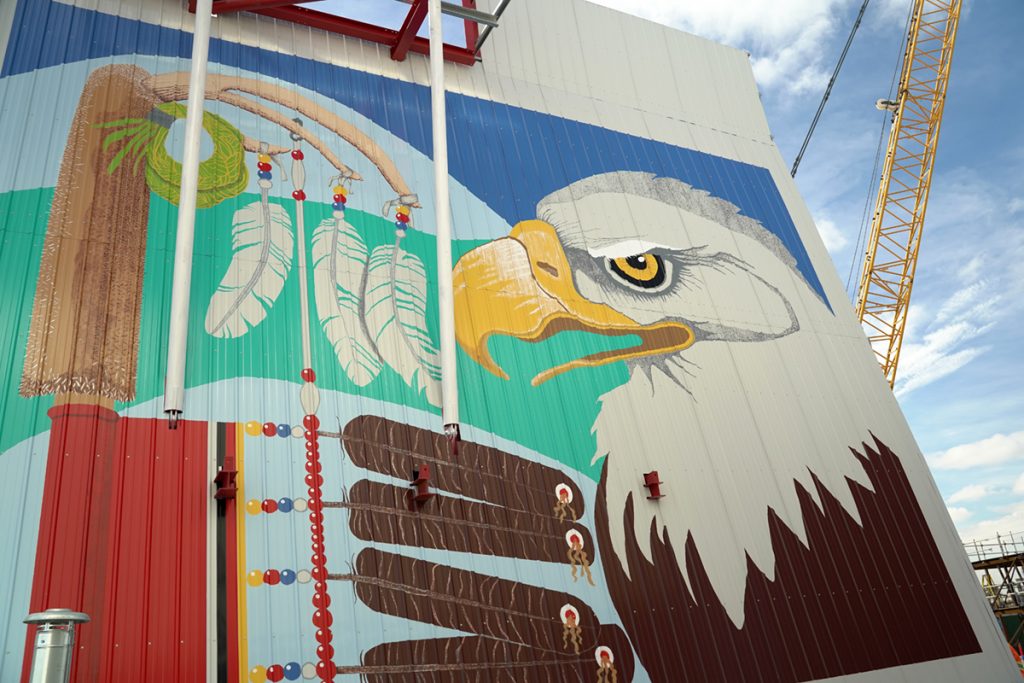
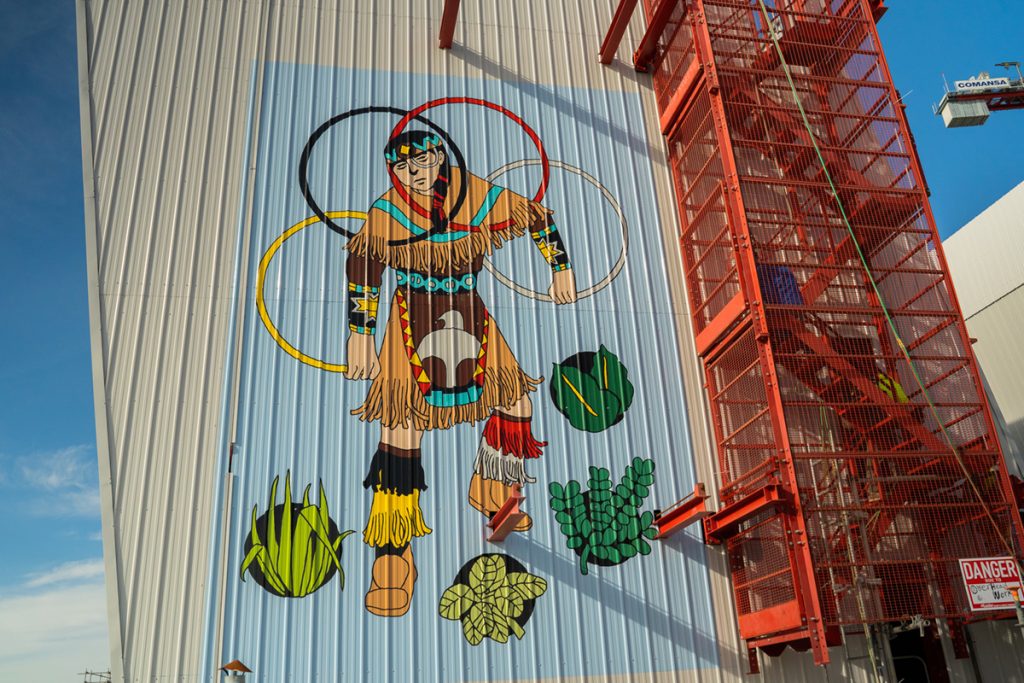
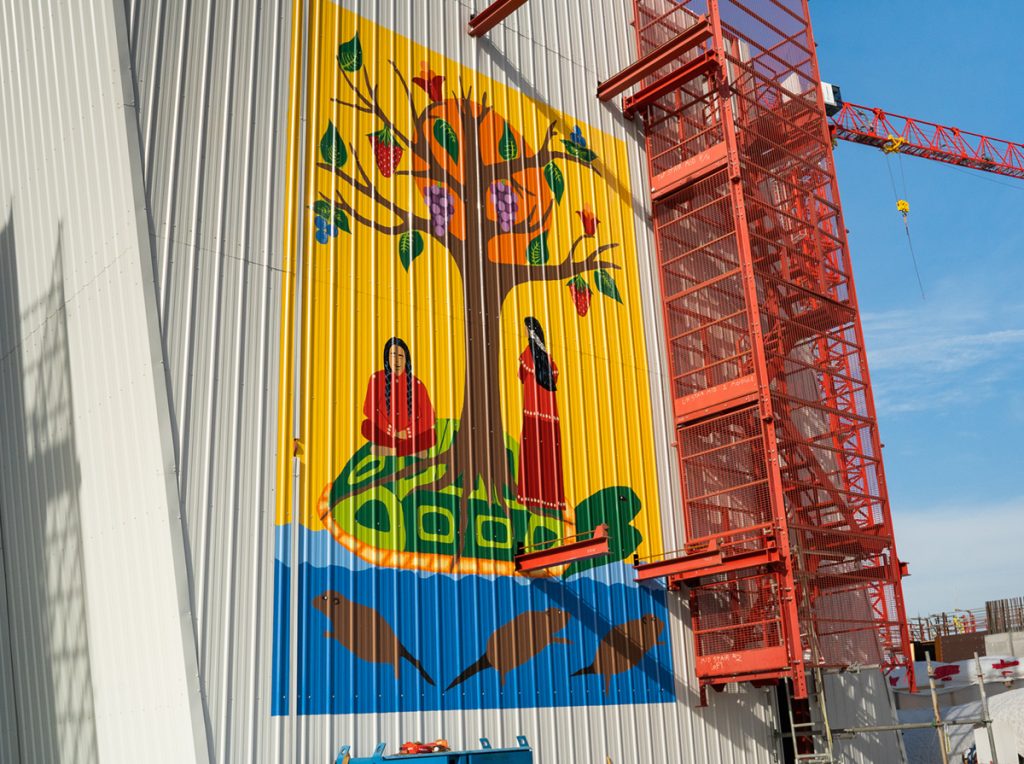
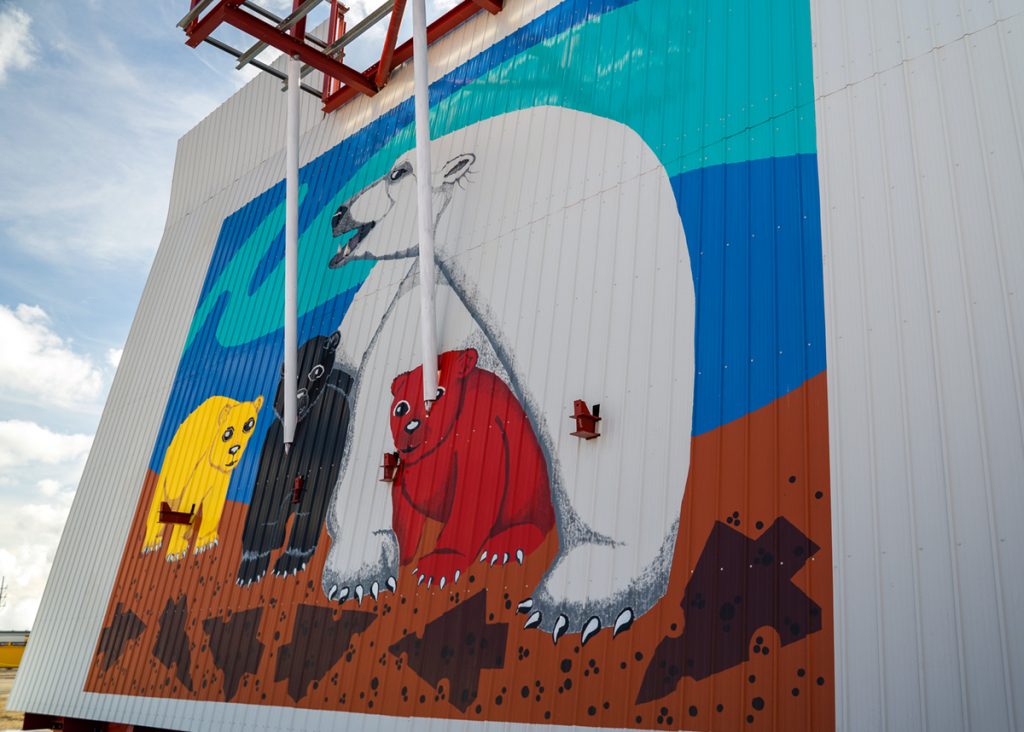
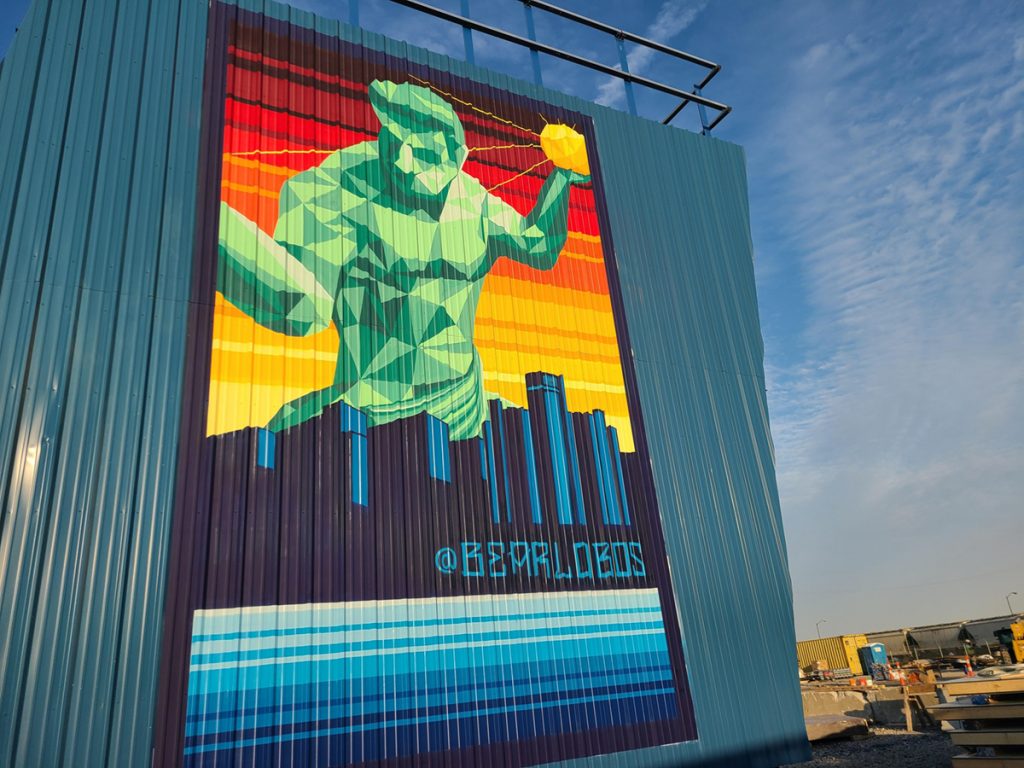
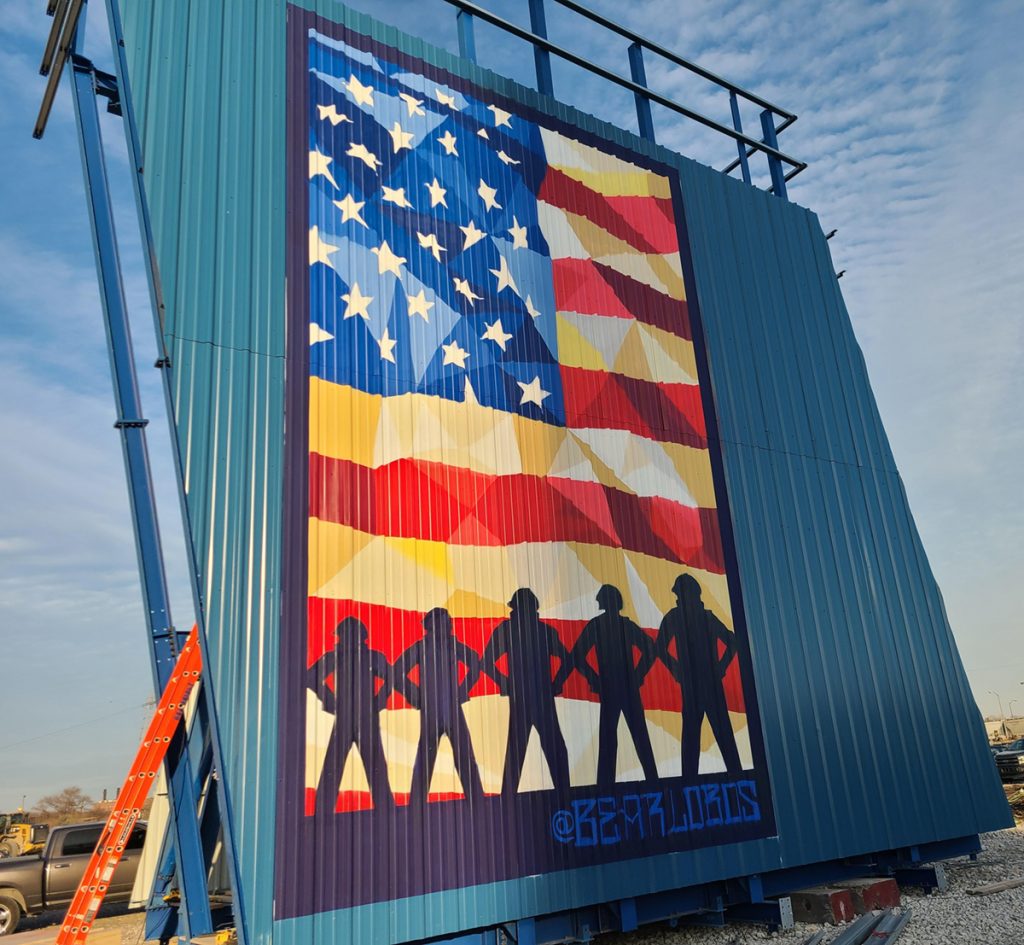
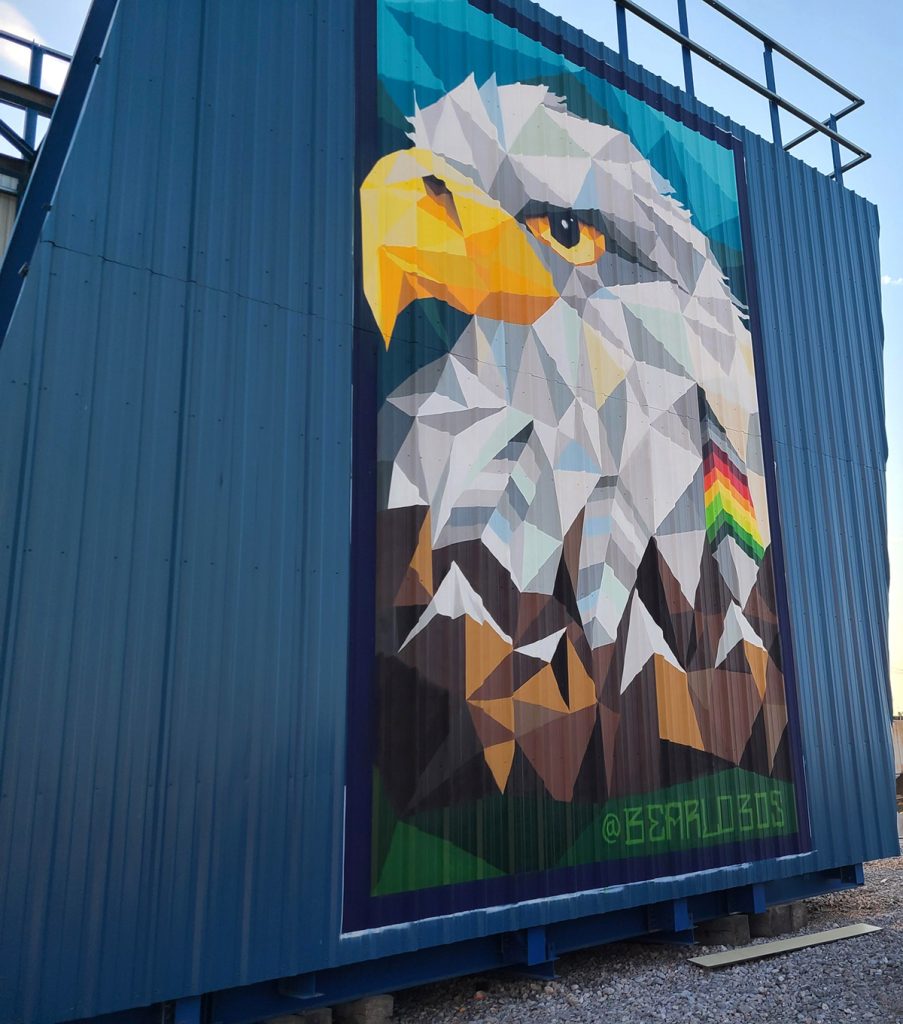

Add comment